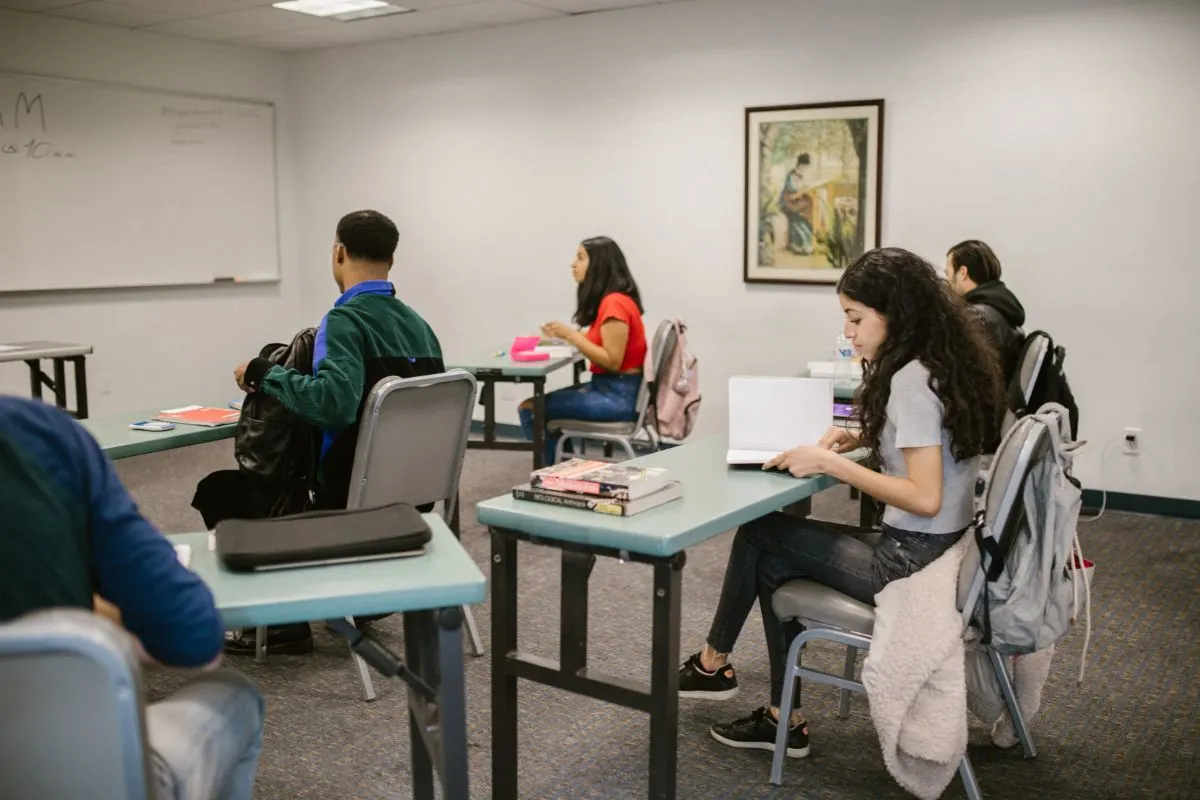Teaching children to appreciate and dissect literature can not only prove to be incredibly engaging for them, but it can also help to imbue them with a number of useful life skills that they can use throughout their life.
The only problem is, actually teaching children to appreciate and dissect literature can often be much easier said than done, and it can be difficult to find the perfect method for doing it.

However, in your search of a way to help your students to appreciate literature, you’ve come across the ‘RACE’ strategy, and now you want to know exactly what it entails.
Luckily, you’ve come to the perfect place, because today we are going to tell you everything you need to know about the RACE strategy, and what it can do to benefit your students! Read on down below to get started!
What Does The RACE Strategy Refer To?
The RACE strategy is a mindset that students can adopt as they approach literature, which allows them to more closely analyze the text, and then devise perfect summations of their thoughts and ideas.
It helps the students to process their thoughts about a text, and then to write about their thoughts in a clear and concise way!
The RACE acronym stands for ‘Restate, Answer, Cite Evidence, and Explain’!
By remembering, and making use of each of these key steps, students can more easily develop their ideas, and then communicate them, to earn the best grades possible.
But what do each of the steps actually mean? Let’s take a look!
‘Restate’
The first step in the RACE process involves taking a look at the question that is being asked, and then restating it.
This allows the student to ensure that they are clear on what exactly is being asked of them with a specific question so that they can ensure they are answering correctly.
It also then allows the reader of their answer to be sure of what question is being answered.
At the start of the student’s answer to any question, they will want to restate the question in some way, to help keep their ideas on track, and to make it easier for examiners to understand their answers.
Let’s say a student was writing an answer to a question about the book Of Mice And Men. The question might be “What is the relationship between George and Lennie?”
From here, the student would want to make a point of restating this question in the opening of their answer.
They may write something like “In order to better understand the relationship between George and Lennie in Of Mice And Men, it would be important to…”
Teaching your students to be specific with their sentence starters helps them to keep on track as they write, which leads to much clearer answers that read excellently on tests and in graded essays!
‘Answer’
The Answer phase of the process involves the student creating a clear and concise answer to the question that they have restated, and writing it down in a clear manner that aligns with the question itself.
This proves that the student can answer the question with confidence, which can help them to earn a much better grade.
The answer that the student gives here will be their statement which they then support with further evidence.
If we were to return to our Of Mice And Men example, then, following the restated question above, the student may write “In the opening section of the novel, it is revealed that George and Lennie are Actually not related at all and that they have continued to work with each other throughout the years.”
‘Cite’
This is largely the make-or-break section of the process that can help a student easily grab a much higher grade.
The first two steps merely set up the groundwork for the argument that the student is making, while the cited evidence helps to prove their answer definitively.
At this part of the process, the student is proving their knowledge and understanding of the text by backing up their answer with direct evidence, via quotes from the text.
This is why it is important to encourage your students to highlight the text as they read it, whenever they come across interesting and useful bits of text that they might be able to make use of.
This allows them to quickly flick through the text when presented with a question, and find powerful quotes that can help them to back up their answers.
Encourage students to use as many quotes as they want. The more quotes they cite that directly back up their answer, the more powerful their point will be.
Doing this every time a student answers a question helps to make them better readers, as they will be much more discerning as they analyze a text, able to pick up on important moments or quotes!
‘Explain’
For the final part of the process, the students will need to take the quotes that they have cited from the text, explain how they relate to their answer, and strengthen it as a response to the question!
This is a crucial part of the process that you will want to encourage your students to take their time with. A strong explanation can help to give an answer a lot of strength that can help them to earn much higher grades overall.
You will also want to encourage your students to also delve into the context of any quotes they cite in their answers, as this helps to further prove their understanding of the text, making their response even stronger.
Teaching your students to approach their citations like this will also help to make them much stronger readers.

How Do You Teach The RACE Strategy?
As you can see, the RACE strategy is very effective as a way of approaching a text, so let’s find out how you can teach it to your students in a way that is memorable and useful!
Start Early
Generally, you want to start teaching your students to use the RACE strategy as early as possible. The reason for this is that it helps to lay a great framework for their studies that will help them to grow much stronger as students.
If you were to teach the strategy too late, it may clash with existing strategies that the students have already begun to employ, which could cause confusion.
Take It Slowly
Because you will be teaching the students an entirely new way of thinking, and approaching their work, you will want to make sure to take it nice and slowly.
As such, you will want to take the time to teach each of the steps in the process at a time, so that the students have the time to get used to each step, before moving to the next.
We recommend having a full lesson for each step in the process, to allow plenty of time for the full process to be memorized!
Take The Students Through A Text
One of the best ways for the students to get to grips with the strategy is to see it in practice. Take your students through a section of your chosen text, and show them how you would go about applying the RACE strategy to it.
As you go through the steps of the strategy, be sure to show the students how you are applying them directly to the text, by highlighting certain sections.
Teach Your Students To Be Discerning
When you are still in the early days of implementing the RACE strategy into the classroom, you will want to make sure to teach the students to check over their entire answers after using the strategy.
Encourage them to look back through their answer and highlight each of the distinct sections, such as the restatement, the answer, the citations, and the explanations.
This will help the students to internalize the structure, so that they can draw upon it without even thinking!
What Are The Benefits Of Using The RACE Strategy?
A Good Starting Point
Getting started in analyzing and responding to literature can be a daunting prospect because naturally, the students will have a lot of ideas, but they will have trouble putting those ideas into words in a way that is clear and concise.
Establishing this strategy helps the students to put their ideas into order, and devise a strong answer to literature questions.
Easier Assessment From Teachers
As well as helping the students to more easily make a case in their answers, the RACE strategy is also useful for helping students to assess a student’s knowledge of a given text.
Teachers will be able to easily read through a student’s answer, ascertain the level of knowledge of the student, and then adjust the education around them, to help them to better understand the text.
Useful For Struggling Students
Implementing the RACE strategy into the classroom can be useful for students who may be experiencing a little more difficulty with the curriculum.
The strategy helps the students to more easily organize their thoughts, while also giving them a solid framework that they can work within, to make their answers stronger.
The strategy helps to take away a lot of the guesswork from responding to literature, and this helps to make it much less daunting for those students that may have a little more difficulty!
To Wrap Up
There you have it! The RACE strategy is easily one of the most useful strategies that your students can apply to the literature that they read, to help and make them more discerning and intelligent readers.
The strategy is incredibly easy to teach and comes with a number of benefits that help to make learning much easier for both students and teachers.
Frequently Asked Questions
What does the S stand for in races writing?
One optional step that some use when applying the RACE strategy is the ‘S’ step, which refers to summing up all of the points made in the answer!
Why is it important to respond to literature?
Literature response is a key skill to teach to students, because it helps to make them much stronger critical thinkers!
- Homeschooling In High School: Pros And Cons - February 24, 2024
- How Do I Withdraw My Child From School To Homeschool? - February 23, 2024
- How To Not Go Crazy Homeschooling Kids: A Guide For Frazzled Parents - February 22, 2024









Leave a comment